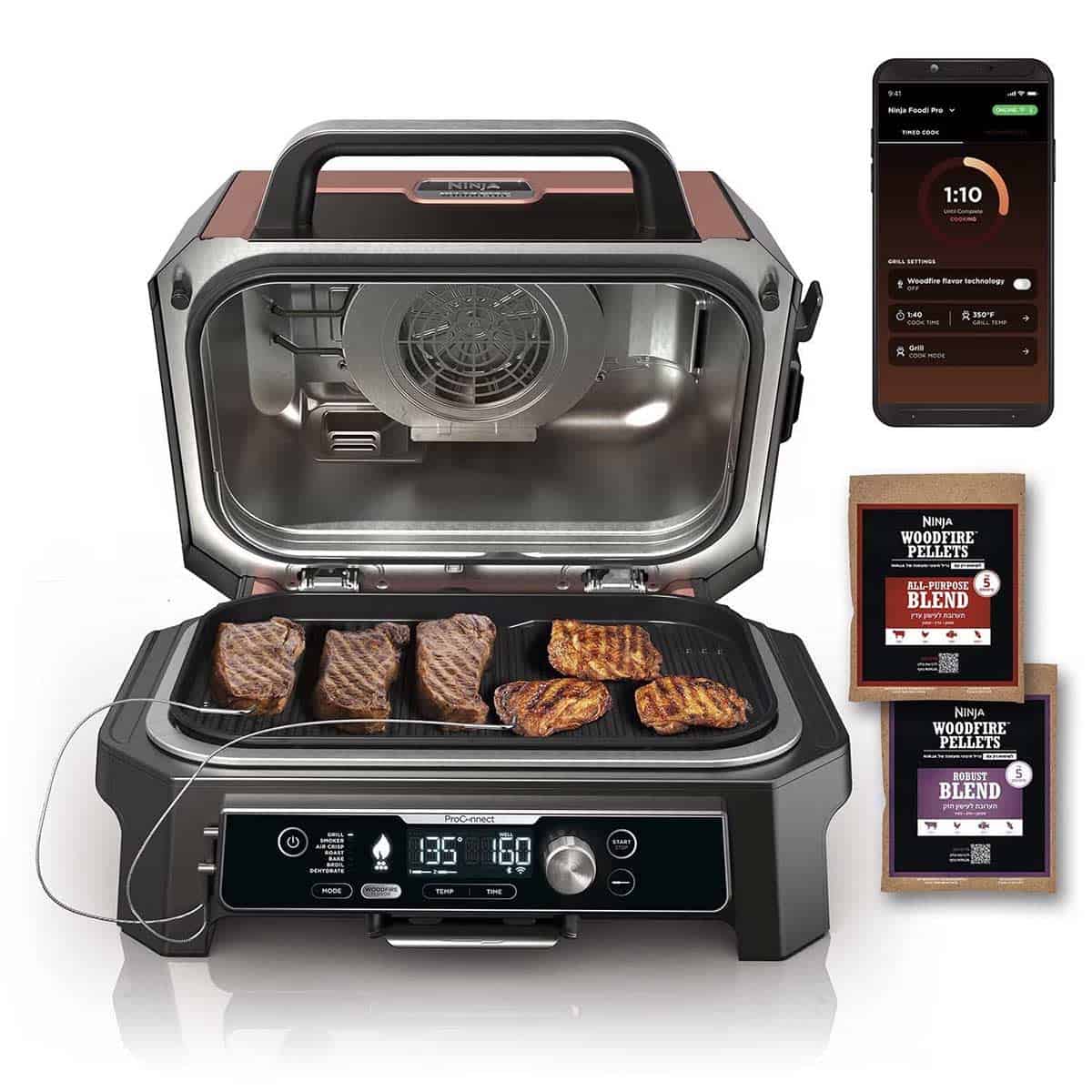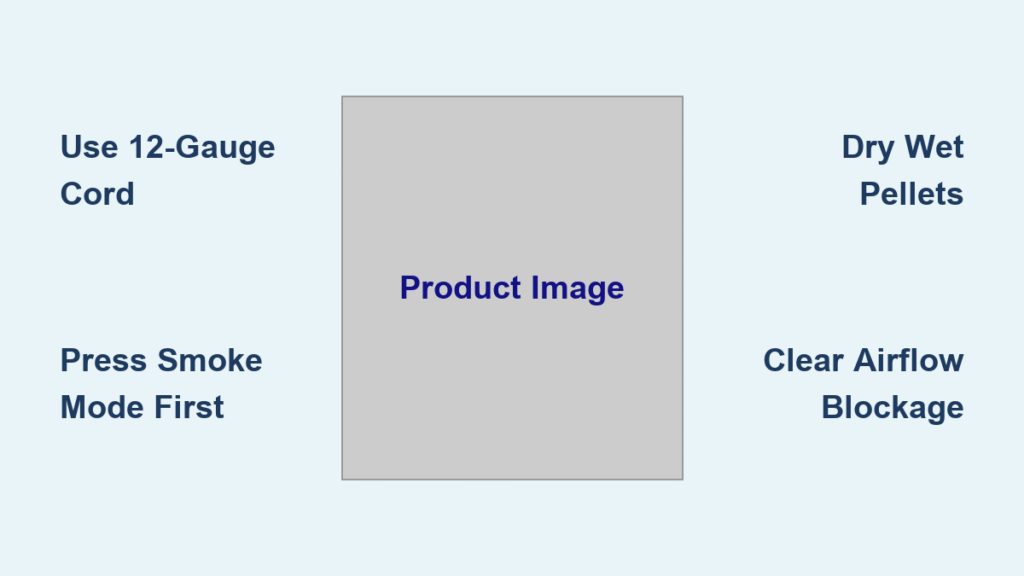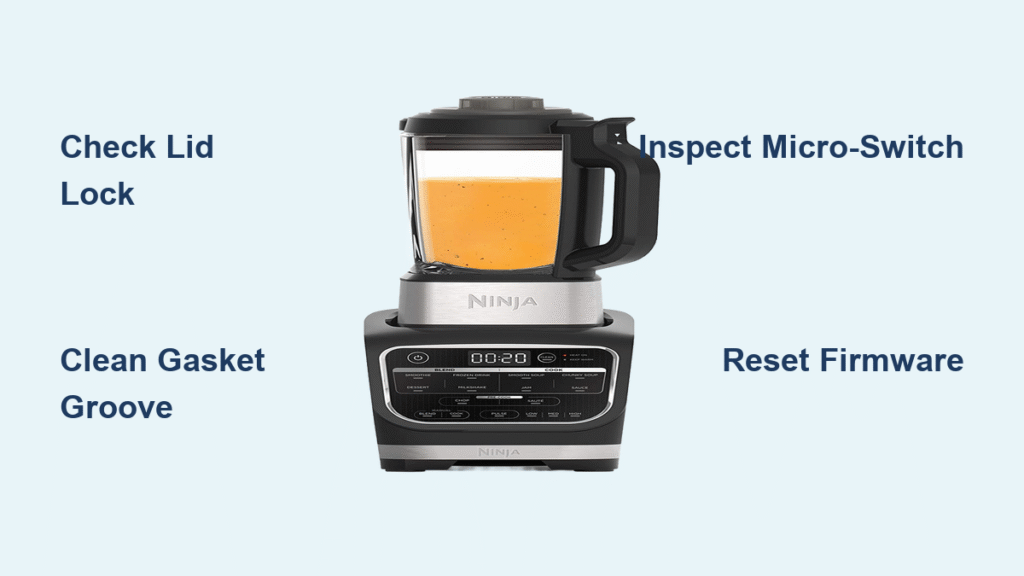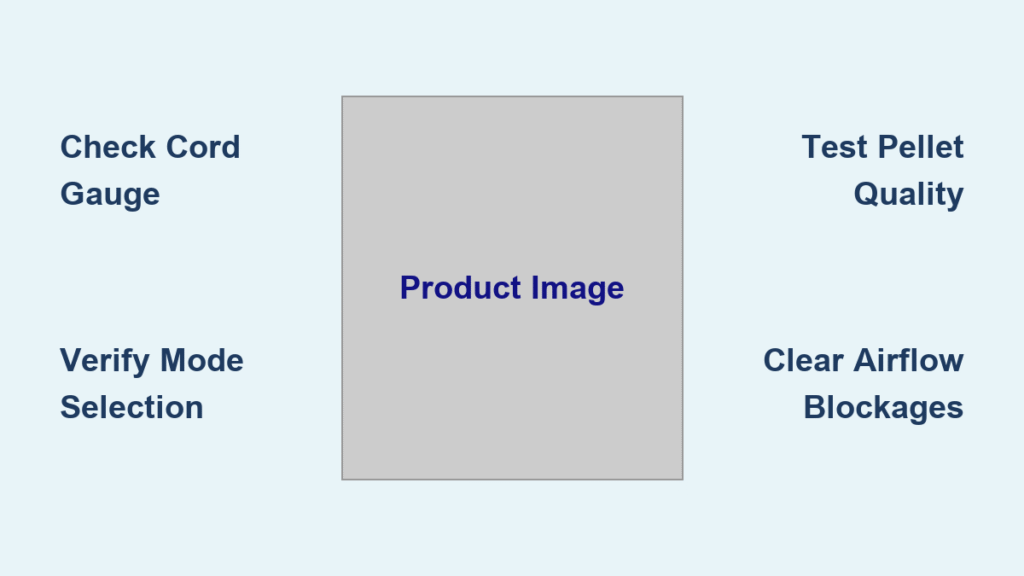Your Ninja Woodfire Grill sits cold and silent when it should be filling your backyard with that rich, aromatic smoke. You’ve loaded fresh pellets, pressed the buttons correctly, and waited—but zero smoke appears. This frustrating scenario affects thousands of grill owners, yet the solution is often simpler than replacing parts. When your Ninja Woodfire refuses to smoke, it’s almost always one of five fixable issues: power problems, button errors, bad pellets, airflow blockages, or a simple reset needed. Let’s diagnose exactly what’s killing your smoke and get your grill back to delivering that perfect wood-fired flavor in under 15 minutes.
Wrong Extension Cord Sabotages Ignition Power

Heavy-Duty Isn’t Heavy Enough for Woodfire Ignition
Your Ninja Woodfire demands serious electrical muscle—similar to a space heater—not the weak current from standard extension cords. Most “heavy-duty” cords sold at hardware stores use 16-gauge or 18-gauge wire that starves the ignitor of necessary power. The grill requires 14-gauge wire for runs under 25 feet or 12-gauge wire for up to 50 feet to deliver the 120V/15A it needs. Using an undersized cord causes critical voltage drop, preventing the ignitor from reaching the 700°F+ required to ignite pellets. If your outlet feels warm during startup or the grill powers on but never glows red, your cord is the culprit.
Immediate solution: Unplug immediately and connect directly to a wall outlet, or grab a true 12-gauge extension cord rated for 15+ amps. Never use coiled cords—the heat buildup worsens power loss. Test your outlet with a hair dryer first; if it struggles, you’ve found your problem.
Smoke Mode Button Sequence Errors
Critical Startup Mistake Everyone Makes
Pressing the Woodfire button at the cycle start in smoke mode is the #1 user error causing smoke failure. The grill interprets this as a request to stop smoke generation during normal cooking. Always select Smoke or Smoked Grill mode first before pressing Start—this activates the Woodfire Flavor Technology circuitry. If you accidentally hit Woodfire during startup, cancel the cycle and restart completely.
Pellet Refill Ignition Protocol
Adding pellets mid-cook requires special handling. Simply dumping in new pellets then walking away causes “empty burn”—where old pellets finish burning while new ones remain cold. After refilling, hold the Woodfire button for 4-5 seconds until you hear the ignitor click. This triggers a dedicated ignition cycle just for the fresh pellets. Never add pellets while the grill is in high-temp Grill mode; switch to Smoke mode first to maintain the 180-225°F range ideal for smoke production.
Wet or Old Pellets Kill Smoke Instantly

Moisture Detection and Emergency Fix
Damp pellets won’t ignite regardless of other settings. Check for these telltale signs: pellets crumble when squeezed, feel cool to the touch, or leave brown residue in the hopper. Even premium pellets absorb moisture if stored improperly. For immediate recovery, microwave 1 scoop on a paper towel for 30 seconds—this user-verified trick drives out surface moisture and preheats pellets closer to ignition temperature. Never use pellets that smell musty; they’ve absorbed too much humidity for recovery.
Pellet Storage Rules You’re Probably Breaking
Store pellets in resealable 5-gallon buckets with gasket lids, not the original bag. Keep them in a climate-controlled space—not garages or sheds where humidity fluctuates. Always empty the hopper after cooking; residual pellets left overnight will wick moisture from the air. Check manufacturing dates—pellets older than 6 months lose density and burn poorly. When buying new bags, squeeze them first; quality pellets feel hard and make a sharp cracking sound.
Food Placement and Wind Block Smoke Flow

Overloading Chokes Your Grill’s Lungs
Stuffed turkey racks or stacked rib trays physically block the exhaust pathway behind the cooking chamber. This creates backpressure that suffocates the flame. Maintain 2-3 inches of clearance around all food and never stack items above the fan level near the rear. Large roasts should sit toward the back where airflow is strongest. If smoke vanishes after adding food, you’ve overloaded the chamber—remove items immediately to prevent complete extinguishment.
Wind and Placement Kill Smoke Production
Position your grill at least 3 feet from walls or corners—tight spaces trap exhaust and create negative pressure. Strong breezes blowing directly into the rear vent can literally blow out the pellet flame. Rotate the unit so vents face open space, not toward structures. In high-wind areas, create a temporary windbreak using a grill cover propped open (never fully enclosed). Never operate in enclosed patios—the lack of fresh air intake starves combustion.
Reset Procedures That Actually Work
Standard 90-Second Power Cycle (Fixes 90% of Issues)
- Turn unit completely OFF using control panel
- Unplug from wall outlet
- Wait 2-3 minutes (critical for capacitor discharge)
- Plug directly into wall outlet (no extension cord)
- Restart in Smoke mode with fresh pellets
This clears electrical glitches and resets the control board. If the ignitor glows red within 3 minutes but smoke stops later, proceed to the nuclear reset.
Nuclear Reset for Stubborn Smoke Failure
For grills that refuse to smoke after multiple attempts:
1. Unplug for 5 full minutes
2. Empty entire hopper and vacuum feed tube
3. Refill with microwave-dried pellets
4. Restart in Smoke mode
5. Listen for the ignitor click at 90 seconds—this confirms pellet ignition
If no red glow appears through the feed opening after 3 minutes, you have a hardware failure requiring professional service.
Visual Smoke Failure Diagnosis
First 5-Minute Emergency Check
Within moments of startup:
– Feel the ignitor housing—should be warm by 2 minutes
– Look for red glow through the pellet feed opening
– Smell for burning wood (not plastic!) within 3 minutes
– Listen for fan hum—complete silence indicates motor failure
Critical Failure Indicators
- No warmth + no glow: Ignitor or control board failure
- Plastic burning smell: Unplug immediately—electrical hazard
- Smoke starts then dies: Moisture in pellets or airflow blockage
- Error codes on display: Document code before resetting
Prevent Future Smoke Disasters
Daily Shutdown Ritual
After every cook:
1. Empty ALL pellets from hopper
2. Wipe ignition electrode with dry cloth
3. Clear vent openings with stiff brush
4. Remove drip tray to prevent grease fires
Leaving pellets in the hopper overnight invites moisture absorption. For weekend warriors, run a 2-minute “cleanout cycle” with no pellets before storage.
Winter Storage Protocol
For cold-weather storage:
– Remove pellets and run empty cycle for 2 minutes
– Place silica gel packs inside cooking chamber
– Cover with breathable fabric cover (never plastic tarps)
– Store pellets indoors in sealed containers
Never store your grill with pellets inside—condensation in the feed tube causes clogs that prevent smoke.
When to Call Ninja Support Immediately
Model-Specific Emergency Signs
For K17s1513z4k1 grills (and all 2020+ models):
– Ignitor shows no warmth after 3 minutes of smoke mode
– Error codes E01, E02, or E05 appear repeatedly
– Smoke starts but cuts out every 5 minutes
– No fan sound during startup sequence
Call support at 1-866-646-6288 (9 AM-9 PM ET Mon-Fri) with your model number ready. Mention “woodfire not smoking” for priority routing. Most issues get resolved in under 10 minutes with their diagnostic scripts.
Your Smoke Trinity for Guaranteed Results
Dry pellets, correct power delivery, and perfect button sequencing form the unbreakable smoke trinity for your Ninja Woodfire. When these align, visible smoke should billow within 5-10 minutes of startup—any longer means one element is failing. The microwave pellet trick alone solves 40% of “not smoking” cases, while proper extension cords fix another 30%. Remember: Never press Woodfire at cycle start, always refill pellets with the 4-second hold, and give your grill breathing room from walls and wind. Follow these protocols, and your backyard will smell like a championship smokehouse within your next cook. For persistent issues, Ninja’s certified technicians replace ignitors in under 20 minutes—keeping your grill smoke-ready all season.





